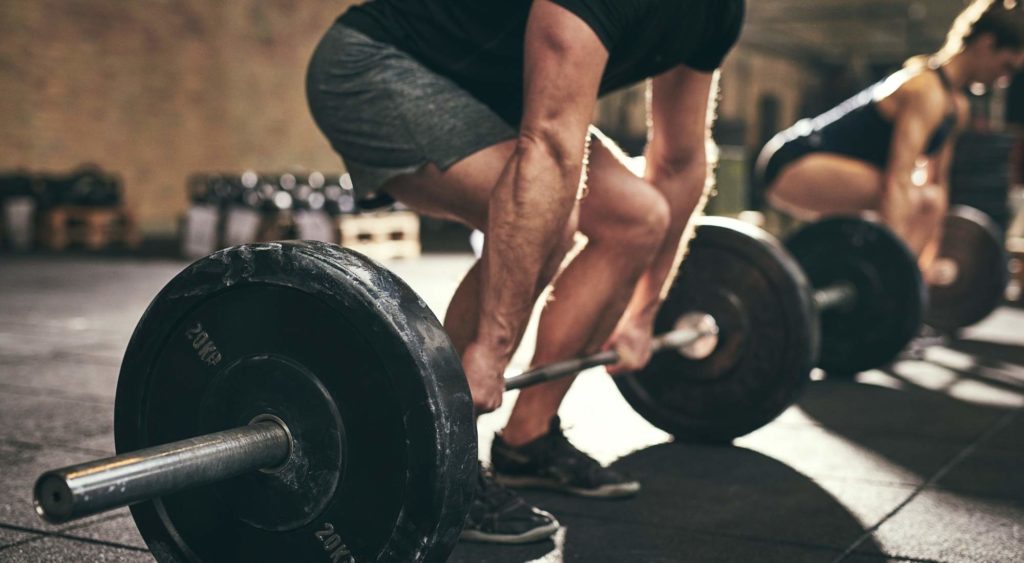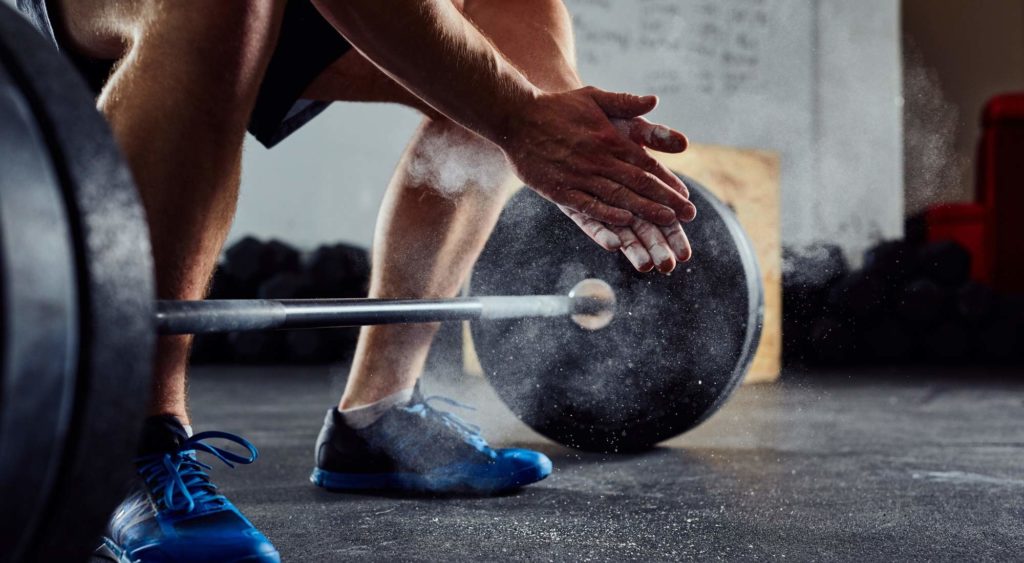
You realize the importance of exercise to increase your strength and stamina.
A variety of exercises can be beneficial in these areas, but deadlifts are one of the most basic exercises aimed at getting stronger and maintaining strength.
But you’re wondering if you can overdo it with deadlifts. Is it safe and beneficial to do them every day?
We’ll answer this question and give you some tips on how to increase your deadlift frequency to match your fitness goals.
Table of Contents
- What Is a Deadlift?
- How Often Should You Deadlift? 3 Factors To Consider
- Is It Okay To Deadlift Every Day?
- How Often To Deadlift: 3 Ways To Effectively And Safely Increase Your Frequency
- 4 Types of Deadlifts To Vary Your Deadlift Routine
What Is a Deadlift?
Simply put, a deadlift is an exercise that involves picking up dead weight from the ground and putting it back down — thus the name.
Though the exercise seems relatively simple, there is much more involved than what you see at face value — and there are many variations on this seemingly straightforward exercise.
Deadlifts are a compound exercise (as opposed to an isolation exercise) which means it involves using these multiple large muscle groups:
- Leg muscles
- Back
- Core
- Glutes
Though this exercise is considered a compound exercise, it involves one of the most basic movements we perform every day.
Think about it. How many times a day do you bend over to pick something off the floor, whether it’s:
- Laundry
- Toys scattered by your toddler, or
- The pen that rolled off your desk?
Deadlifts are one of the most functional movements in our daily lives.
Not only are they functional, but deadlifts may also be considered one of the best exercises for:
- Building strength
- Growing muscle, and
- Improving health
How does one simple exercise do all that?
If you’ve ever done deadlifts or watched someone else do them, you’ll see how the exercise:
- Raises the heart rate
- Burns calories
- Improves coordination and balance
These all contribute to the fundamental benefits that come from doing deadlifts on a regular basis.
How Often Should You Deadlift?: 3 Factors To Consider
Should you deadlift every day? Only a few days a week? Once a week?
Those are excellent questions, but the answers aren’t as straightforward.
Any exercise routine, including a routine that utilizes deadlifts, will vary with each individual. How often to do deadlifts doesn’t fit into a one-size-fits-all category.
Just as the individuals vary, how often to deadlift per week will vary — some advanced athletes may deadlift 5 to 6 times per week while a beginner may find a benefit in sticking to deadlifts once a week.
How often to deadlift is also dependent on many factors including:
- Age
- Goals
- Experience
- Genetics
- Recovery potential
However, we will focus on these top 3 factors:
- Training History
- Overall Program Structure
- Fitness Goals

#1: Training History
To be able to evaluate your training history, you need to know what is meant by the term. Training history is determined by how long you have been doing the specific training — in this case, deadlifts.
Are you:
- A beginner?
- An intermediate athlete?
- An advanced athlete?
Correctly gauging your experience level is a major determiner in how often to deadlift.
If you are a beginner, starting at a low or moderate frequency may serve you the best because it will help you:
- Not overdo it and
- Avoid injuries.
Having an understanding of how much your body can handle will help you choose a realistic frequency for deadlifts:
- A beginner may choose one to three times a week, with a longer recovery time between exercises.
- An advanced athlete who has already been hitting the gym up to six days a week and has already been incorporating deadlifts into their routine may be ready for a higher frequency such as five or six times a week. Recovery time may also be less.
#2 Overall Programming Structure
Before developing a routine that incorporates deadlifts, you should take a close look at your overall program structure. You may find that you need to make some changes to increase your deadlift frequency.
It’s important to have a fitness program that doesn’t have you maxing out on the first day.
We’ve all experienced it.
You feel great and super energized, so you work really hard on day one, but by day two you can hardly move. Not only does that demotivate us, but it also makes it harder to progress and can open us up for injuries.
When considering the frequency of deadlifts, it’s also important to consider different variations of the deadlift exercise — keep reading to get some ideas on variations below.
Not only will this help with your ability to recover and improve, but it may also keep you from getting bored with the same exercise day after day.
Intensity and volume should also be examined when planning to increase your frequency of deadlifts.
When striving to do deadlifts every day, you may need to lessen the volume or begin at a low volume and intensity and steadily increase them throughout the week.
Stability and manageability are key. Your training intensity and volume should be stable to avoid overtraining that can lead to injuries.
#3 Fitness Goals
You’ve probably heard the saying, “A goal without a plan is just a wish.” (Antoine de Saint-Exupery)
Whether you agree with Antoine, your fitness goals have much to do with determining how frequently you should include deadlifts into your exercise routine.
- Are you training for a weightlifting meet? You may want to increase your frequency as well — up to 5 to 6 times a week.
- Do you want to improve your strength? Greater frequency will be necessary to improve your overall threshold. Consider working on one deadlift movement 2 to 4 times a week.
- Or are you striving to maintain strength? Consider one day a week focused on building strength. To maintain strength, for this focused day, try moderate repetitions with moderate to higher volume.
If you are still uncertain about where to begin or how to proceed, why not reach out to our professional trainers at In Motion O. C.?
Our fitness coaches can give you the guidance you are looking for and strive to:
- Help our clients look and feel better
- Improve posture, balance, flexibility, cardiovascular endurance, and function
- Prevent recurrence of pain and injury
Click here to get started.
Is it Okay To Deadlift Every Day?
In one word — yes. It can be okay to deadlift every day.
But just because you can doesn’t mean you necessarily should. To deadlift every day, you should consider three factors:
- Variations
- Volume
- Correct execution and form
Varying the types of deadlifts performed can make doing them every day more doable and beneficial. Doing only barbell deadlifts every day would not be recommended and probably would not be sustainable.
Volume is an important factor to consider. If you plan on consistently deadlifting high volumes, doing them every day might not be the safest or most beneficial. However, a lower volume may lend itself to daily deadlifts.
Lastly, the correct form and execution are crucial. We’d even go so far as to say that if you don’t know how to do deadlifts correctly, you shouldn’t do them at all. Whether you deadlift once a week or every day, doing them incorrectly won’t give you the results you’re looking for, and worse, you may be putting your body at risk for injury.

How Often To Deadlift: 3 Ways To Effectively And Safely Increase Your Frequency
If you believe doing deadlifts every day will help you meet your goals, consider the following tips to perform them safely and effectively.
#1: Vary Your Weight, Sets, Reps, And Types Of Deadlifts
As discussed above, too much volume or too many reps day after day can be too taxing, not allow for recovery, or put you at risk for injury.
Having a different focus on separate training days can help you determine how to vary the weight, sets, reps, and types of deadlifts. For example, you may consider a schedule like the one below to improve your strength:
- One day with lower reps but higher volume
- One or two days with more reps but lower volume
- Include variations on the other days of the week
Remember, sustainable training is key. Don’t overdo it.
#2: Listen To Your Body
We all know what it “sounds” like when our body talks to us.
After a strenuous workout or a long stressful week, you may hear your body say, “Dude! Get some rest!”
Listen to your body — and do what it says.
Focus on getting the proper nutrients to fuel your deadlift sessions and know when to take a break for recovery.
#3: Add Deadlift Accessory Lifts
Deadlifts aren’t the only compound exercises that can benefit you in the ways we’ve already discussed. Instead of increasing deadlift frequency, try adding other exercises that target the same muscles used in deadlifts.
To get the results you are desiring and to keep you from the dread of monotony in your routine, consider adding the following compound exercises to supplement your deadlift program:
- Front squats
- Pull-ups
- Bench press
- Row variations
- Overhead barbell press

4 Types of Deadlifts To Vary Your Deadlift Routine
A deadlift is an effective exercise, and there are many variations with different types of equipment that can:
- Give you the results you want
- Improve strength
- Spur motivation
- Help add frequency to your workout
#1: Barbell Deadlift
The basic barbell deadlift involves lifting a loaded barbell off the ground, pulling it up to your waist, and then placing it back on the ground.
Though it sounds basic and simple, correct form and technique are of the utmost importance.
Here are some tips to remember:
- Use an overhand grip.
- Keep your hands shoulder-width apart.
- Keep your lower back naturally arched — not hunched up or collapsed.
- Keep the bar close to your body.
#2: Resistance Band Deadlift
To do the resistance band deadlift, you will stand on the resistance band and secure the ends with your hands and then move your chest down toward the floor and back up.
This variation of the deadlift builds strength and increases stability as it works the following muscles:
- Hamstrings
- Glutes
#3: Kettlebell Romanian Deadlift
The Romanian deadlift can be performed in various ways with different equipment including:
- Kettlebells
- Barbell
- Dumbells
The kettlebell Romanian lift is great for the beginner and the person with limited equipment.
Romanian deadlifts are similar to the deadlift except that the motion is backward. Instead of lifting the dead weight, Romanian deadlifts involve starting with the weight at waist level and lowering it to the ground.
This variation of the deadlift targets the:
- Hamstrings
- Glutes
- Forearm flexors
#4: Sliding Deadlift
To do the sliding deadlift, you will need one small piece of equipment called a glider. If you don’t have a glider, you could use a household item like a towel or paper plate.
This variation is similar to the Romanian deadlift, but as you lower the weight to the ground, you simultaneously slide one foot back using the glider.
This exercise works your muscles and at the same time tests your stability.
No matter what variation you do or how frequently you do it, good form and technique are essential.
Our fitness experts at In Motion O. C. can guide you in an exercise program that meets your needs, and they will make sure you are performing the exercises correctly while striving to optimize each movement.
Let us lead you through your journey to fitness and health and cheer you on along the way.



